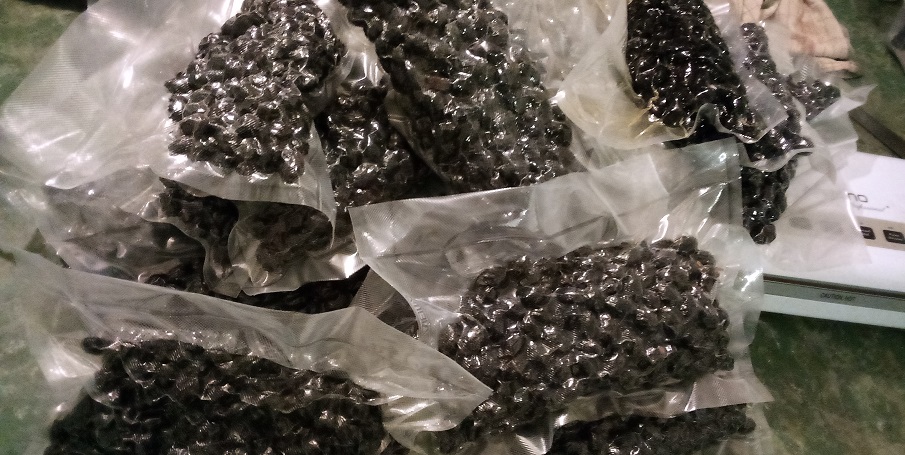Home-made
We sell our oil via retail outlets. We don't do farmgate sales. I don't want people coming up and down the drive, leaving gates open, wandering about, spooking my livestock. And more importantly, I don't have the personality needed to deal with retail sales. On top of all that there's mobile pests and diseases to keep out of the trees.
So we supply local retail outlets, Ringer Reef and Punkah Pantry in Porepunkah, and the newly opened The Peaks Cheese Shop in Bright.
We also sell to the tourist trade indirectly via gift packs and hampers.
 Our labels have a QR code that directs the reader to an About Our Oil webpage and the retail information can be kept up to date there. And both shops have mentioned that people have come in to buy oil after tracking them down via the QR code, so I am pleased that's working as it should.
Our labels have a QR code that directs the reader to an About Our Oil webpage and the retail information can be kept up to date there. And both shops have mentioned that people have come in to buy oil after tracking them down via the QR code, so I am pleased that's working as it should.
We also post occasionally on the local Facebook page, when we have something to tell people. Like the cheeseshop opening, which was last week, or our second gold medal. And that also generates some retail sales. People are very good about trying local products.
This year was our first one actually selling the oil as a business rather than the old arrangement where we onsold our crop. (No complaints, that worked for us. We only changed because the buyers retired.) And I can already see there's a lot of scope to widen our products.
Obviously I have access to a lot of olives, so I can pretty much do whatever I want in terms of preserving olives. But most years I just handpick enough for us, maybe 20-30 kilos. That's more than we eat, and even though I give a lot away we still have a pantry full of old olives.
But this year I'm ramping up the tests, so we have a working process for doing more preserved olives so we can sell them as a product.

These are the dry-salt cured kalamatas I did this year. Late picked, 100% ripe, they dried iut and cured in crates of salt over a 4-6 week period. They are rich, almost meaty, and surprisingly not too salty. Great result.
Long after the harvest, in September, I found a single tree absolutely laden with the biggest, fattest ripe frantoio olives I have ever seen. Common sense tells me they are NOT frantoio. Why would one tree produce fruit so out of synch with the rest of the grove? It's likely it’s a cross-pollinator. ( I could get them tested, but I'll save the funds for something else.) I wet-cured these in salt and vinegar in two batches, with two different outcomes.
So here's our olives, with some Peaks Cloudlet fresh cheese, and some home-made quince cotognata.
I didn't share this with anyone else!

